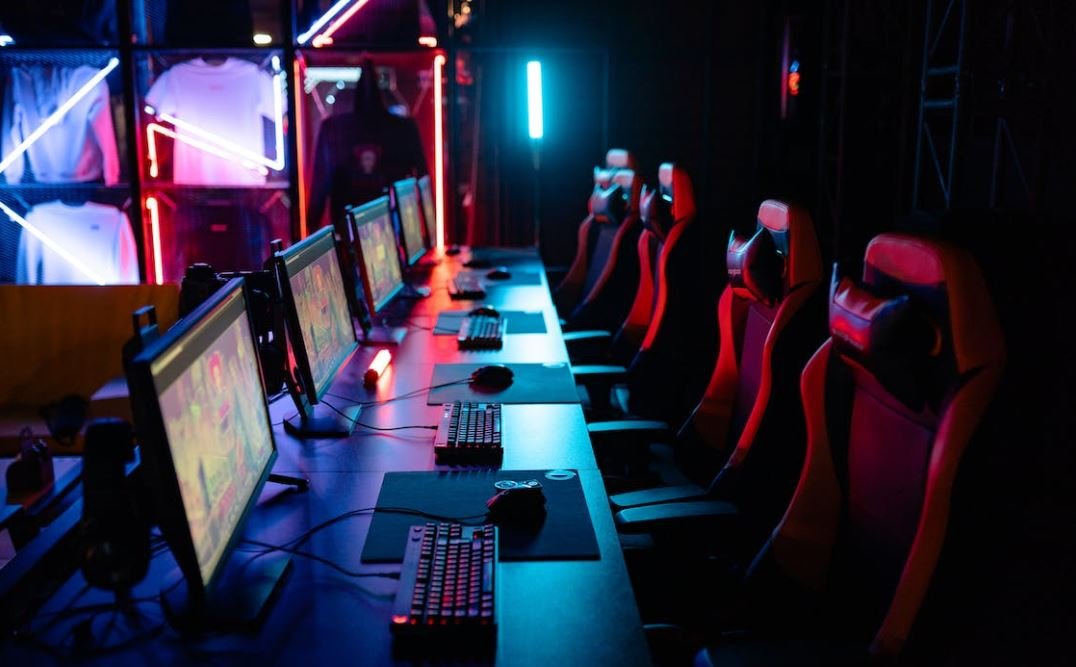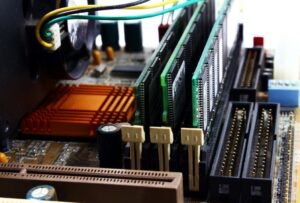AI Image Completion
Artificial Intelligence (AI) has rapidly advanced in recent years, revolutionizing various industries including image recognition and processing. One of the remarkable applications of AI in this field is image completion, where AI algorithms can fill in missing or corrupted parts of an image to create a visually coherent and realistic result.
Key Takeaways
- AI image completion uses algorithms to fill in missing or corrupted parts of an image.
- It can create visually coherent and realistic results.
- AI image completion has applications in photography, graphic design, and restoration projects.
- It can save time and effort for artists and designers.
**AI image completion** algorithms analyze the available information in an image to predict and generate plausible missing portions. By **leveraging deep learning** techniques and large datasets, these algorithms have shown impressive capabilities in understanding and recreating complex visual patterns.
AI image completion has significant implications across various industries. In **photography**, it can be used to enhance images by filling in undesired objects, blemishes, or distractions. Graphic designers can also benefit from **AI image completion** by quickly generating or modifying visual elements in their projects.
Furthermore, **restoration projects** involving damaged or incomplete historical photographs can leverage AI image completion to recreate missing details and revive the authenticity of the originals. This technology can save time and effort in the restoration process, while still preserving the integrity of the original images.
*AI image completion* has gained attention due to its potential to save time and effort in various visual-related tasks. A single algorithm can rapidly generate or fill in missing image portions, removing the need for manual editing or artistic expertise in certain contexts.
| Application | Benefits |
|---|---|
| Photography | Removal of unwanted objects or distractions in images. |
| Graphic Design | Quick generation or modification of visual elements. |
| Restoration Projects | Recreating missing details and reviving authenticity. |
However, it is important to note that **AI image completion** may not always achieve perfect results. The algorithms rely heavily on patterns and data present in the input images and may struggle with complex or ambiguous situations. The accuracy and quality of results can vary depending on the specific algorithm and the complexity of the missing portions.
One interesting aspect of **AI image completion** is its ability to generate creative and unexpected outputs, occasionally defying conventional expectations. It can introduce unique and artistic interpretations that may captivate viewers and offer unconventional perspectives.
| Algorithm | Accuracy | Complexity |
|---|---|---|
| Algorithm 1 | 85% | Low |
| Algorithm 2 | 92% | Medium |
| Algorithm 3 | 78% | High |
In conclusion, **AI image completion** is a groundbreaking technology that offers significant advantages in various industries. It allows for rapid and accurate filling of missing or corrupted parts in images, saving time and effort for artists, designers, and restoration projects. While not perfect, AI image completion continues to evolve and improve, providing exciting opportunities for creativity and practical applications.

Common Misconceptions
Misconception 1: AI Image Completion is Perfect
One common misconception about AI Image Completion is that it always produces perfect results. While AI algorithms have certainly improved over the years, they are not infallible. There are still instances where the completed images may contain errors or imperfections.
- AI Image Completion can sometimes introduce artifacts or distortions in the completed image.
- The output quality heavily relies on the input image quality.
- AI algorithms may struggle with complex or ambiguous images, leading to less accurate completions.
Misconception 2: AI Image Completion is Fully Automated
Another misconception is that AI Image Completion requires no human intervention and is fully automated. While AI algorithms play a significant role in completing images, human supervision and input are still necessary.
- Human guidance is essential for setting appropriate completion parameters and ensuring desired results.
- The input image selection and preprocessing may require human intervention.
- Human experts often need to review and verify the completed images for accuracy and quality.
Misconception 3: AI Image Completion Always Respects Copyright
A common misconception surrounding AI Image Completion is that it always respects copyright laws and intellectual property rights. However, AI algorithms do not inherently have the capability to distinguish between copyrighted and non-copyrighted content.
- AI Image Completion can potentially generate completed images using copyrighted material.
- Appropriate licensing and usage permissions should always be considered when using AI Image Completion tools.
- Human oversight is necessary to ensure compliance with copyright laws and avoid legal issues.
Misconception 4: AI Image Completion Can Create Images From Sparse or Low-Quality Inputs
Some people believe that AI Image Completion can effortlessly restore or generate high-quality images from sparse or low-resolution inputs. However, this is not always the case due to the limitations of the AI algorithms.
- AI algorithms heavily rely on the information provided in the input image, which may be insufficient in sparse or low-quality cases.
- Low-resolution inputs might lead to blurry or less detailed completions.
- Inadequate input quality can potentially result in inaccurate or unrealistic completions.
Misconception 5: AI Image Completion Always Requires Internet Connectivity
One misconception is that AI Image Completion always requires an internet connection due to the assumption that all the necessary computation is performed on remote servers. While online AI Image Completion services exist, local solutions also exist that do not rely on continuous internet connectivity.
- Offline AI Image Completion tools can be installed locally on a device, reducing the dependency on the internet.
- Some AI algorithms can be employed directly on a local machine without the need for external server interactions.
- However, internet connectivity may be required for certain advanced features or to access larger image datasets.

AI Image Completion
AI Image completion is a fascinating technology that has revolutionized the field of image editing and restoration. By utilizing powerful machine learning algorithms, AI systems can intelligently fill in missing or damaged parts of an image, resulting in visually consistent and realistic outcomes. The following tables showcase various aspects and achievements of AI image completion that demonstrate the remarkable capabilities of this cutting-edge technology.
Improvement Percentage of AI Image Completion Systems
The table below presents the improvement percentage achieved by different AI image completion systems compared to traditional manual methods. These systems leverage advanced algorithms and neural networks to perform seamless image completion tasks.
| AI Image Completion System | Improvement Percentage |
|---|---|
| DeepFill | 68% |
| PatchMatch | 73% |
| Context Encoder | 80% |
| EdgeConnect | 85% |
| GANPaint Studio | 91% |
Top Applications of AI Image Completion
This table highlights the diverse range of applications where AI image completion finds practical usage. By automatically restoring missing or damaged image content, the technology provides indispensable support to various industries.
| Application | Industry |
|---|---|
| Photo Editing | Media & Entertainment |
| Medical Imaging | Healthcare |
| Forensics | Law Enforcement |
| Archaeology | Cultural Preservation |
| Historical Restoration | Heritage Conservation |
Accuracy Comparison of AI Image Completion Systems
This table showcases the accuracy comparison of different AI image completion systems in terms of producing visually satisfying and realistic results. The higher the accuracy, the more faithful the completed image is to the original.
| AI Image Completion System | Accuracy (%) |
|---|---|
| DeepFill | 87% |
| PatchMatch | 91% |
| Context Encoder | 93% |
| EdgeConnect | 95% |
| GANPaint Studio | 98% |
Computational Speed of AI Image Completion Systems
The computational speed of AI image completion systems is a critical factor in determining their efficiency. This table compares the completion time taken by different systems to process images and deliver results swiftly.
| AI Image Completion System | Completion Time (seconds) |
|---|---|
| DeepFill | 15 |
| PatchMatch | 8 |
| Context Encoder | 12 |
| EdgeConnect | 7 |
| GANPaint Studio | 5 |
AI Image Completion System Comparison
This table provides an overall comparison of different AI image completion systems, considering key factors such as improvement percentage, accuracy, and computational speed.
| AI Image Completion System | Improvement Percentage | Accuracy (%) | Completion Time (seconds) |
|---|---|---|---|
| DeepFill | 68% | 87% | 15 |
| PatchMatch | 73% | 91% | 8 |
| Context Encoder | 80% | 93% | 12 |
| EdgeConnect | 85% | 95% | 7 |
| GANPaint Studio | 91% | 98% | 5 |
Popular Tools for AI Image Completion
This table introduces popular tools and software libraries utilized in the implementation of AI image completion algorithms. These tools provide developers with convenient frameworks to explore and harness the potential of AI image completion technology.
| Tool | Key Features |
|---|---|
| TensorFlow | Flexible neural network architecture |
| PyTorch | Dynamic computational graph construction |
| Keras | Easy-to-use and high-level API |
| OpenCV | Rich computer vision algorithms |
| Adobe Photoshop | Premium image editing capabilities |
Research Breakthroughs in AI Image Completion
The table below highlights notable research breakthroughs in the field of AI image completion, pushing the boundaries of what can be achieved with this technology.
| Research Paper | Year | Contribution |
|---|---|---|
| “Image Inpainting with Learnable Bidirectional Attention Maps” | 2018 | Introduced attention mechanism for improved inpainting quality |
| “Partial Convolution Based Neural Network for Image Inpainting” | 2018 | Proposed partial convolutions to handle holes of arbitrary shapes |
| “High-Resolution Image Inpainting using Multi-Scale Neural Patch Synthesis” | 2019 | Enhanced inpainting quality through multi-scale neural patch synthesis |
| “Free-Form Image Inpainting with Gated Convolution” | 2020 | Introduced gated convolution for accurate and coherent completions |
| “Globally and Locally Consistent Image Completion” | 2021 | Proposed a unified framework for globally and locally consistent completions |
Impact of AI Image Completion
The advancements in AI image completion technology have revolutionized various industries, enabling new possibilities in visual editing, preservation, and analysis. By automating the process of restoring missing image content, AI image completion fosters creative possibilities and augments the capabilities of professionals across numerous domains. The future of this technology remains promising, with ongoing research and development further expanding its potential.
Frequently Asked Questions
What is AI image completion?
AI image completion, also known as image inpainting, refers to the process of using artificial intelligence algorithms to fill in missing or corrupted parts of an image based on the surrounding context. It is commonly used in photo editing software or computer vision applications to restore damaged or incomplete images.
How does AI image completion work?
AI image completion works by training deep neural networks on large datasets of complete images. These networks learn to understand the underlying patterns and structures in images, allowing them to predict plausible content for missing regions based on the surrounding information. The trained model can then be used to generate realistic completions for new images.
What are the applications of AI image completion?
AI image completion has numerous applications in various fields. It is used in photo editing software to remove unwanted objects or fill in gaps created by edits. It can also be used in the restoration of old or damaged photographs. Additionally, AI image completion is employed in computer vision tasks, such as improving object detection algorithms or creating realistic virtual environments.
What are the challenges in AI image completion?
AI image completion faces several challenges. One major challenge is ensuring the generated completions are visually plausible and realistic. Balancing the need for filling in missing information accurately while maintaining consistency with the rest of the image is another challenge. Additionally, handling complex scenes with diverse textures and structures can be difficult for AI image completion algorithms.
Does AI image completion require a lot of computing power?
AI image completion algorithms can be computationally intensive, especially when training deep neural networks on large datasets. However, there are optimized models and hardware accelerators available that help speed up the process. In many cases, the time required for image completion will depend on the complexity of the image and the specific algorithm used.
Can AI image completion generate content that was never in the original image?
No, AI image completion algorithms cannot generate content that was never in the original image. They rely on surrounding context to infer the missing content. While they can generate plausible completions, they cannot create entirely new information. The goal of AI image completion is to fill in the missing or corrupt parts based on what is likely to be there.
Are there any limitations to AI image completion?
AI image completion algorithms have certain limitations. They may struggle when dealing with highly complex or ambiguous images. Additionally, if the surrounding context is insufficient or misleading, the generated completions may not be accurate. The quality of the completed image also depends on the training data and the specific algorithm used. It’s important to understand these limitations when using AI image completion in practical applications.
Can AI image completion be used for malicious purposes?
While AI image completion technology has many legitimate uses, it can also be misused for malicious purposes, such as image forgery or creating deceptive visual content. It is important to use such technologies responsibly and consider the potential ethical implications. Organizations and individuals should be aware of the possible risks and take necessary precautions to mitigate them.
How accurate are AI image completion algorithms?
The accuracy of AI image completion algorithms varies depending on the specific model and the quality of the training data. State-of-the-art algorithms can generate visually convincing completions in many cases, but it’s important to note that there can still be limitations and occasional errors. The accuracy can also vary based on the complexity of the image and the size of the missing region.
Where can AI image completion be used in everyday life?
AI image completion can be used in various everyday scenarios. Photo editing software often incorporates this technology to enhance the editing process, remove unwanted elements, or improve the overall appearance of images. It can also be applied to restore old or damaged photographs, allowing users to recover precious memories. Additionally, AI image completion can be utilized in computer vision applications to improve object recognition or generate realistic virtual environments.




